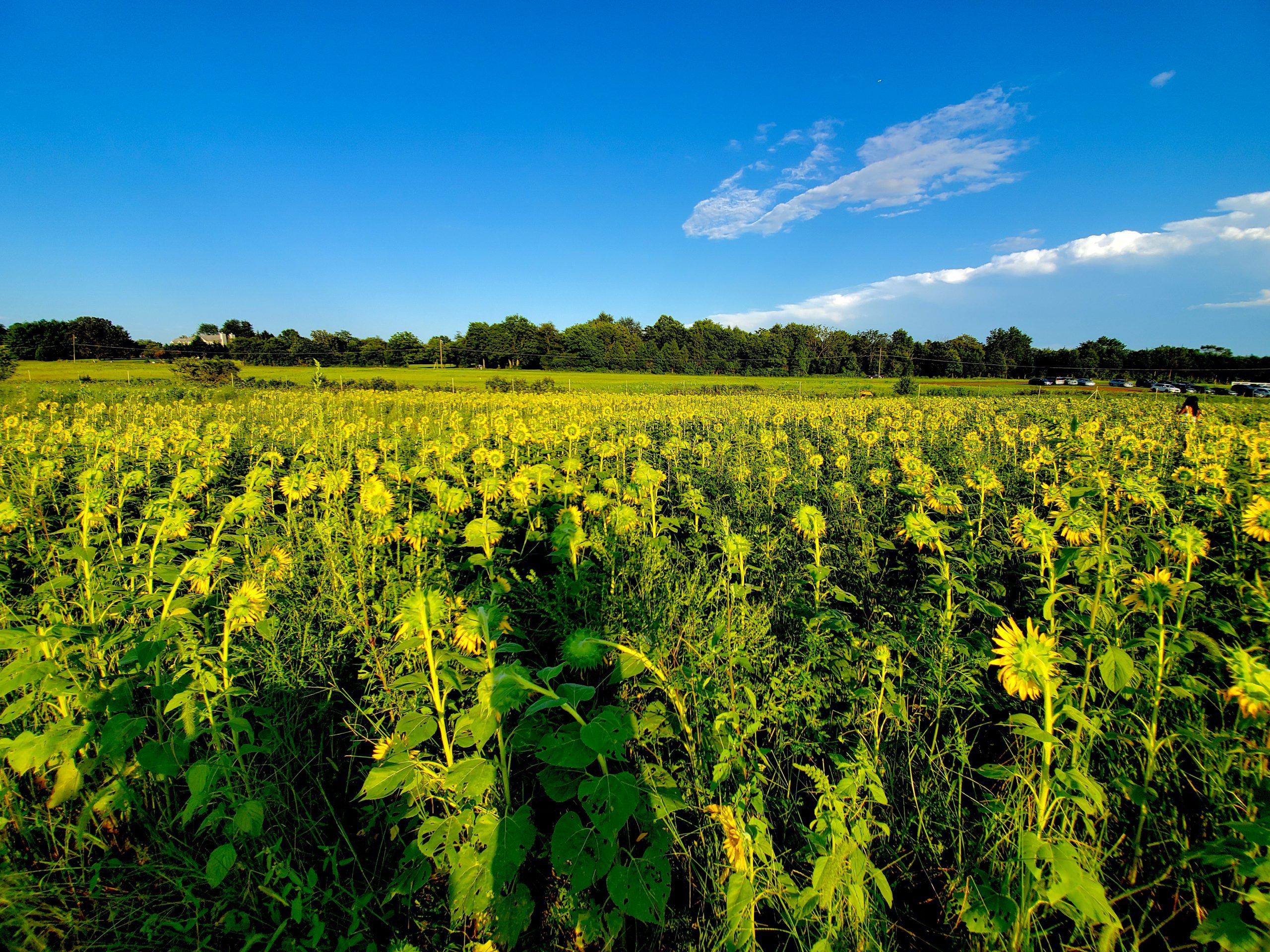A Sunflower Farm and Thoughts on “Open Space”

Last week, my wife and I drove out west to Burnside Farms, a pick-your-own sunflower farm with a few other minor attractions (chickens, for one.) Located in Prince William County, Virginia, Burnside Farms is about a one hour drive from Washington, DC—with no traffic. Here’s what the property’s surroundings look like. This is an “edge” area, where genuine countryside and farmland meet with brand-new exurban development. What used to be where all those houses in the top half of the picture are? Fields and forested plots. (As I’ve noted here, the exurbs are not so much a new form of development as they are the first stage of what eventually becomes dense, traffic-choked suburbia. Arlington, for example, a sprawling but almost completely urbanized county, looked a lot like this in the 1930s, 40s, and 50s.)

One of the most well-worn NIMBY arguments for low-density suburbs is a plea for the preservation of “open” or “green” space. We are invited to equate new development proposals with lawns, trees, and parks paved over for concrete expanses of high-rise buildings. To the extent that this concern is valid at all, it is an argument against “Manhattanization,” not density per se. But the real tension is not between suburbs and cities, but urbanization and countryside. Lawns and parking lots with a few trees might be nice. But places like Burnside Farms and the fields you pass on the way there are open space in the truest sense, and productive open space at that. The countryside is a different kind of economy than suburbia, but it is a collection of productive enterprises. It can provide a different lifestyle and an occasional “escape” for urban dwellers.
The wider the band of suburban sprawl that separates the city and inner suburbs from the countryside—and it gets wider every year here in Northern Virginia—the more open space is subdivided and paved over, destroying natural habitat and putting fresh air and activities like sunflower cutting, apple picking, farm tours, and more, further out of reach of urbanites, particular those without cars and/or of lower incomes. Low-density development, in other words, does not preserve open space, but destroys it. At best, it turns a functioning countryside into little bits of aesthetic amenities.

Once any level of urbanization arrives, even exurban, the fundamental countryside character begins to go. The economics of operating a land-heavy, relatively low-margin business like Burnside Farms (or a garden center, orchard, or kiddie amusement park along a sparsely developed stretch of road) have already been upended. Now it should be noted that this isn’t all bad, because when farm owners sell out to developers, they often secure their retirement. But if the preservation of coherent and usable tracts of pleasant land is the goal, it makes much more sense to densify places that have already been developed in some manner than to continue pushing development further and further out, until it takes a one-hour drive, very far from any transit connections, to get to an orchard or a farm.
And none of this is even to mention—as Strong Towns emphasizes—the enormous long-term maintenance costs of installing sewers, water pipes, telecom equipment, electric lines, roads, sidewalks, and traffic lights, only to serve a handful of large houses. Or the traffic effects on communities caught between the newest exurbs and the urban core, which face increasing commuter traffic pressure and may eventually feel a need to widen, at great expense, their own roads.
Some years ago, at a conference on food and nutrition I attended, a speaker who worked in low-income urban communities told a story of meeting a young boy in the course of his work and asking him what he liked to eat. “Do you like tomatoes?” he asked, throwing out some common foods. The boy was puzzled, so the speaker, thinking the word must be unfamiliar, pulled up a picture of a tomato on his phone. The boy was still puzzled. He had never seen a tomato. This was a commentary on poor access to fresh food in distressed neighborhoods. But I realize it could also be a commentary on the increasing difficulty and expense of breaking the orbit of suburban sprawl in many places in America. Every child should have the chance to see a tomato, or an apple tree, or a sunflower, in its natural setting. True open space is a civic amenity and a productive enterprise, not a dead patch of green in an ocean of cars, strip malls, parking lots, and McMansions.
This New Urbanism series is supported by the Richard H. Driehaus Foundation. Follow New Urbs on Twitter for a feed dedicated to TAC’s coverage of cities, urbanism, and place.
Comments